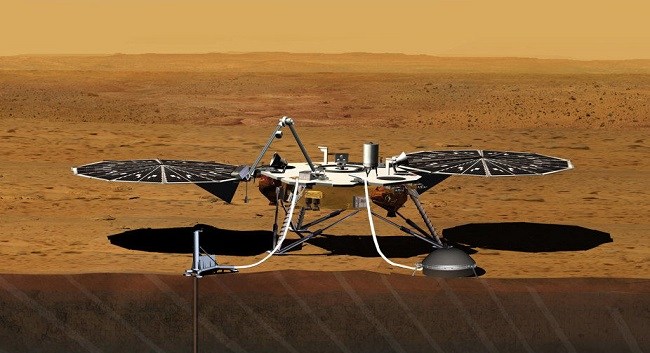This and two future posts will be dealing with important future missions coming up for NASA.
The Asteroid Redirect Robotic Mission (ARRM) is planned to travel to a near-Earth asteroid and obtain a boulder weighting tons. The boulder will be conveyed to a stable orbit around the Moon where it will be explored by astronauts who will bring samples back to Earth. The ARRM spacecraft will utilize advanced ion engines that are much more efficient than current ion engines. The engines will be powered by UltraFlex-style solar panels. One and a quarter billion dollars have been budgeted for this mission that is scheduled to launch in December of 2021.
The ECOsystem Spaceborne Thermal Radiometer Experiment on Space Station (ECOSTRESS) will remotely measure how much water is lost through stomata which are tiny holes in the surface of a leaf. The mission is intended to answer three questions including how the biosphere on Earth responds to changes in the availability of water, how daily water stress of vegetation influences to global carbon cycle, and whether or not we could decrease agricultural vulnerability if we utilize advanced monitoring and improve the estimation of droughts. The mission will accurately monitor the temperature of terrestrial plants. It will use a multispectral thermal infrared radiometer to measure the surface temperature of the plants. It will be able to calculate the temperature of an individual farmer’s field. Thirty million dollars have been budgeted for this mission which is scheduled to launch in April of 2018.
The Mid-Infrared Instrument (MIRI) is part of the James Webb Space Telescope. It will collect images of the emission of galaxies and stars in the infrared portion of the electromagnetic spectrum. The instrument incorporates both a camera and a spectrograph to measure wavelengths from five to twenty-eight micrometers. Silicon arrays doped with arsenic are used for infrared light capture. In order to capture these wavelengths, the instrument must be colder than the rest of the instrumentation so an extra cooling systems will be used to lower the temperature of the device to seven degrees Kelvin. This mission is scheduled to launch in October of 2018.
The Interior Exploration using Seismic Investigations, Geodesy and Heat Transport (InSight) mission is dedicated to sending a stationary lander to Mars in order to study the geological nature of Mars. It will investigate the thickness, size, density and overall structure of Mar’s core, mantle and crust. It will also measure the rate at which heat escapes from the interior of Mars. The InSight mission will monitor any seismic activity, use the heat escaping from the Martian interior to estimate the size of the Martian Core and determine whether the core is liquid or solid. It is estimated that these measurements will be up to ten times as accurate as any previous measurements. One hundred and fifty million dollars have been budgeted for this mission which is scheduled to launch in May of 2018.
Please read Part 2
InSight Martian Lander:
